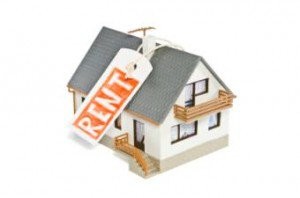 The American single-family rental (SFR) market is alive and well according to two reports released on Wednesday.
The American single-family rental (SFR) market is alive and well according to two reports released on Wednesday.
Morningstar Credit Ratings said strong retention rates and fewer lease expirations helped lower the vacancy rate among single-borrower, single-family rental transactions this month.
The rating company said the average vacancy rate among single-borrower, single-family rental transactions declined to 5.1 percent in December from a revised 5.3 percent in November. Memphis, Tennessee led the nation in vacancy rates at 8.4 percent in December.
Rents rose 3.4 percent in December according to Morningstar, marking the smallest rent increase of 2016. The only downside to today’s data was a rise in delinquency rates to .9 percent from .6 percent a month prior.
The good news isn’t just coming from vacancy rates. Improvement in sponsor’ business models and strategies are benefiting single-family rental transactions, according to a report issued by Moody’s.
Sponsors have shifted their business strategies after buying up distressed properties from depressed markets in bulk in ways that are improving the quality of the properties’ backing transactions.
“With the US housing market recovering from the financial crisis and the inventory of distressed homes shrinking, sponsors of SFR transactions have been transitioning from the bulk purchase of single-family homes to more strategic purchases in markets with higher rental yield, while also selling low-yielding properties,” says Moody’s analyst Padma Rajagopal. “The quality of their portfolios has improved as a result.”
Rajagopal says SFR operators are now increasingly acquiring properties on a one-by-one basis and through multiple listing service sales, as opposed to auctions. Unlike auctions, such sales allow the borrower to assess a home's condition, resulting in lower future unexpected rehabilitation costs. Where SFR operators spent around $100 million a month on acquisitions in 2013, they now spend $20 million to $30 million a month.
Rajagopal also said SFR sponsors are investing more in technology and property management infrastructure, improving their cost management and operating efficiency.
“They are increasingly using ‘smart home’ technology to improve the desirability of homes, for example, and are reducing costs through more efficient turn management and by outsourcing certain tasks,” Rajagopal said.
Moody’s expects the SFR market to remain healthy in the coming years, though several factors could still test its strength and limit its growth, the rating agency says. The shrinking inventory of distressed single-family homes and yield constraints, for example, could see operators purchasing lower quality, non-distressed properties. And if they move further down the credit spectrum in terms of either home or tenant quality, the credit quality of SFR transactions could suffer.
Potential risks to the SFR business, according to Moody’s, include a decline in home prices, the shrinking inventory of distressed single-family homes and yield constraints, and legislative efforts to boost home ownership or more highly regulate the rental market.

 DSNews The homepage of the servicing industry
DSNews The homepage of the servicing industry









